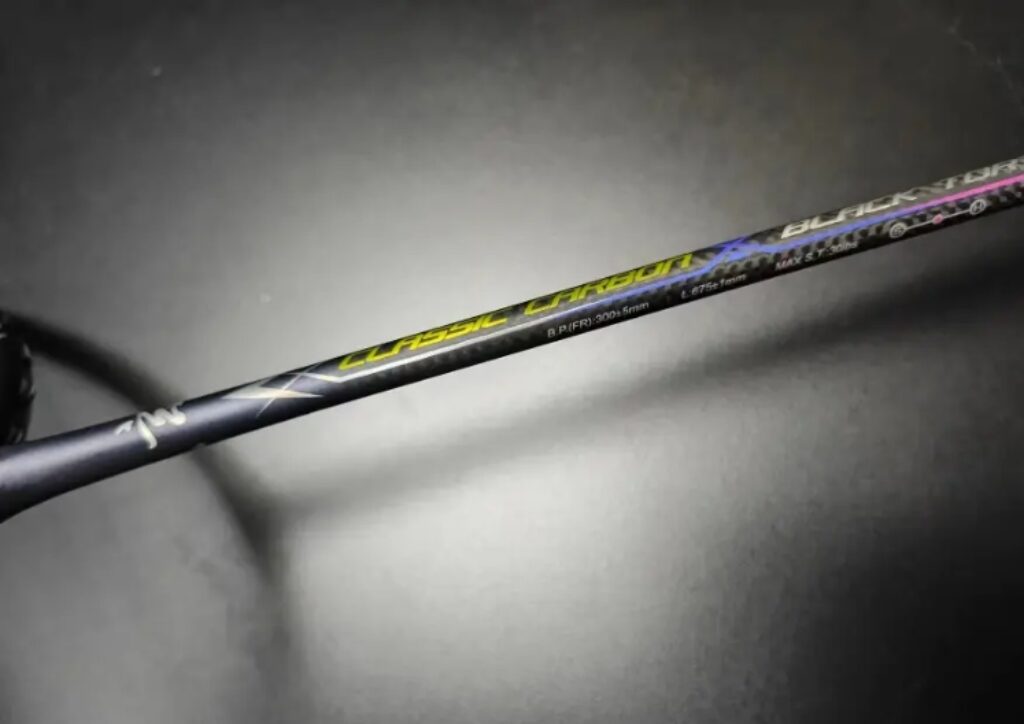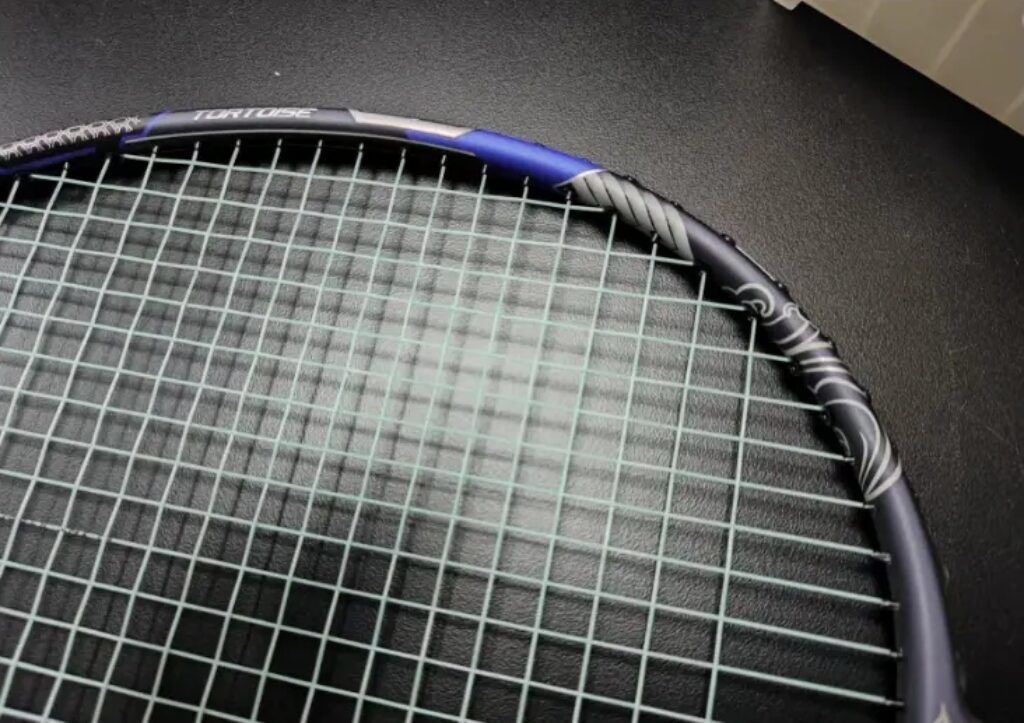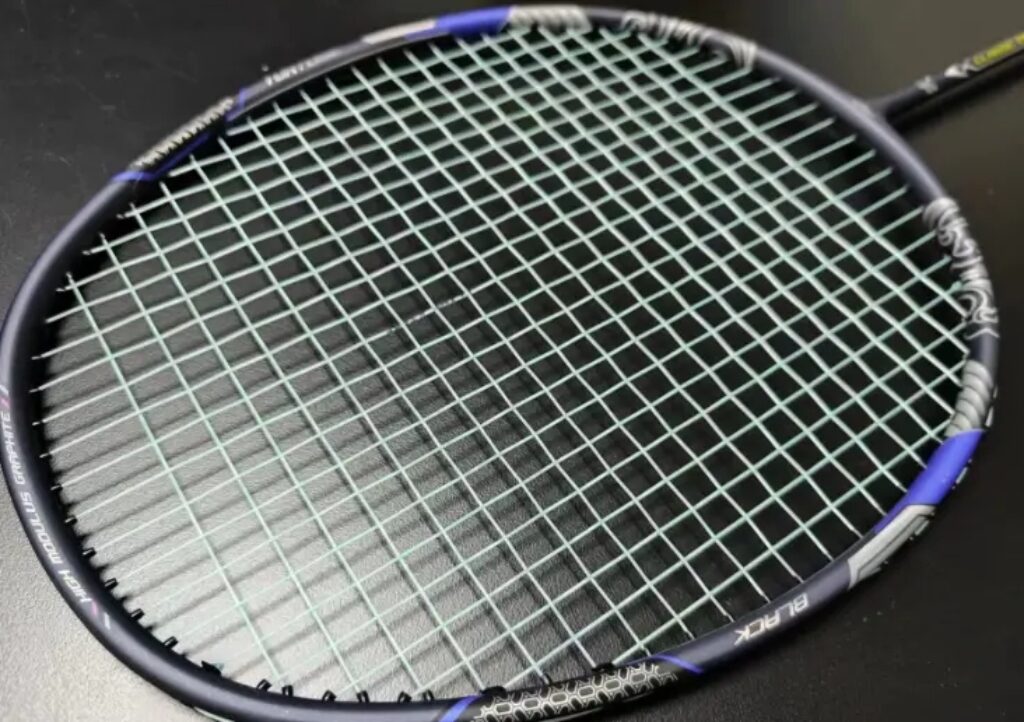After completing the entire Divine Beast series, I’ve finally pieced together the last part of the puzzle—Xuanwu, over a span of 9 months. What’s comforting is that the Divine Beast series seems to have consistently been updated in terms of craftsmanship. In addition to differentiating by frame shape, stiffness, and swing weight, it also keeps up with the times by using new materials. This version of Xuanwu is the only racket in the Divine Beast series to incorporate boron fiber in the shaft.
Though I privately mock the racket’s English name, “Big Turtle,” which I find amusingly simple, I can confidently say that this is yet another fantastic racket.
Specifications: 4UG5, with grip tape. Total weight in use is 97.92g, balance point at 298mm, shaft length of 220mm, with a slightly above-average stiffness. It features a box frame, 76-hole string bed, string grooves at 9-3 o’clock, rated for 30 pounds, strung at 25-27lbs with KT66F strings.
Yes, Boray has returned to its familiar dark base paint, and just when I was about to criticize the design department again, I held back—this time, the color scheme, though not eye-catching, suits the theme well, and the paint quality is impressive. The metallic gray-blue, combined with the semi-matte finish, creates a restrained look that matches the “Xuanwu” theme, especially with the blue accents at the 4 and 8 o’clock positions on the frame. Chinese elements still decorate the frame, and the gold lettering on the shaft stands out more. This visual coherence gives the racket a low-key but professional appearance, avoiding any misleading impressions.

In terms of swing weight, it’s comparable to the 1982 B149 series in the same specification. The balance point is slightly higher compared to Boray’s other products, but it feels moderate during actual play. The frame is a familiar design, enhancing stability and torsional resistance while reducing wind resistance through a streamlined and rounded structure.
Thus, while some claimed that Xuanwu would be a racket aimed at professionals, in actual play, it’s quite user-friendly for players with decent skills. The moderate head weight and relatively long shaft allow players to leverage the shaft’s deformation easily. The excellent elasticity of the shaft and larger sweet spot also provide great support for ball speed and forgiveness.

Although I’ve mentioned the boron fiber shaft six times now, it plays a unique role in Xuanwu. Other rackets with similar shafts may match or even exceed its stiffness, with only the J20 Steel Wing rivaling it, but the latter’s feedback comes mainly from the short shaft design. Xuanwu, however, stands out for its balance of stiffness and elasticity, which leads me to a broad comparison—it feels like a stiffer version of the Ghost Slayer 3.
So, is Xuanwu incredibly satisfying? Absolutely! It offers faster ball response, more direct feedback, and clearer communication between racket and player, constantly tempting me to unleash more power. In its harmonious blend of directionality and elasticity, it not only hits where you aim but also does so with remarkable speed. This is particularly evident in flat clears, where even in doubles, a well-timed clear can solve many problems, leaving opponents hoping the shuttle would land out, only to see it land perfectly in the court.

Given this, why not fully exploit its potential for smashes and see who comes out on top? I certainly did, and Xuanwu handles concentrated bursts of power beautifully. Hitting the sweet spot results in an explosive sound, similar to the Ghost Slayer, with the shuttle flying swiftly into the opponent’s court. Furthermore, adjustments in swing weight and stiffness prevent Xuanwu from having the same issues as the Ziyan 3, where it sometimes fails to control the shuttle. This lets me fully enjoy the racket’s raw power.
However, these changes in swing weight and stiffness also slightly increase the racket’s “bloodsucking” effect, which is a trade-off I find worthwhile. Yet, I still don’t quite understand why, despite official claims that boron fiber only strengthens the shaft, it significantly boosts elasticity.

Despite its streamlined and narrow frame, Xuanwu doesn’t emphasize speed much. When caught in fast-paced exchanges, using Xuanwu in defensive situations feels fairly average. While its stiffer configuration is great for offensive play, in scenarios like flat drives and blocks where you can’t fully utilize your strength, the racket demands more from the player.
Handling defensive play doesn’t just refer to backhand returns or smash defense. In fact, during defensive positioning and receiving smashes, Xuanwu excels in countering with quick returns, often catching opponents off guard. As long as there’s enough time and the shuttle comes in high enough, the backhand clears can capitalize on the racket’s extraordinary elasticity to regain control. However, in situations like drive exchanges or when the opponent is aggressively attacking the net, my own level often leaves me struggling to keep up.

If you don’t play too aggressively, Xuanwu can even be considered for casual games. The larger sweet spot allows for soft blocks or taps at the front court, often giving your partner opportunities to counterattack. Additionally, the racket’s elasticity gives confidence in returning deep clears for defense. Just be mindful of its bounciness at the net, as it can cause shots to float unless you add some slicing.
In conclusion, Xuanwu, the only Divine Beast racket benefiting from boron fiber, delivers a “game-changing” experience to the series. It’s harder and more stable than its predecessors, making it a solid choice. While it’s not a guaranteed win, you definitely won’t lose out with it.

Leave a Reply